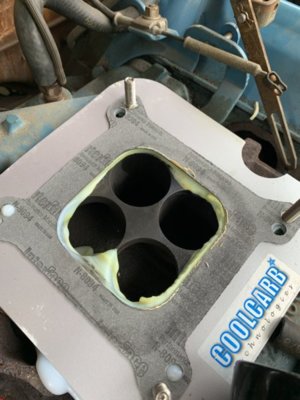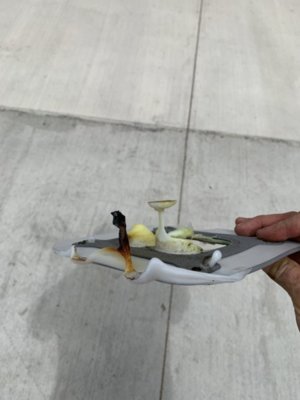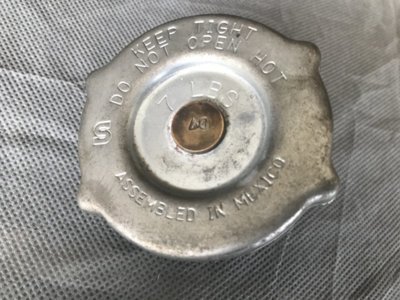Two more possibilities for running hot, timing and air/fuel mixture.
Older engines can't always be tuned or adjusted per their original guidelines. Timing chains can slip over the years, harmonic balancers can move, and the bottom line is you are no longer able to verify where top dead center is using the old methods. Plus, with today's fuels, it's more difficult to reach the point where your old engine performs both efficiently and reliably without sacrificing performance. Following the steps below, you will be able to minimize pinging, have reliable starting under all conditions, and easily get maximum performance from your engine using today's fuels.
1. Connect a vacuum gauge to a vacuum source directly on the intake manifold. Do not attach gauge to ports being used by any other device. Plug any vacuum lines you remove from manifold to make this connection.
2. Loosen the bolt securing the distributor so you can turn the distributor to adjust the timing.
3. Start the motor, let it warm up to normal operating temperature, and stabilize at normal hot idle. Using the idle speed adjustment at the carburetor, set the idle speed as low as possible without stalling the motor. Disconnect the distributor vacuum advance and plug the line.
4. Keep in mind when adjusting the timing, you have to turn the distributor clockwise to advance and counter-clockwise to retard.
5. While watching the vacuum gauge, slowly turn the distributor clockwise (advance timing) and look for a maximum reading on the gauge. For instance, if the reading on your gauge peaks at 18 inches of vacuum, that is the maximum for your engine. (The normal range could be from a high of 20 inches to a low of 15 inches, depending on the internal condition of your motor). The reading will drop off if you advance too far, so turn the distributor counter-clockwise (retard timing) to go back to the peak reading on your gauge.
6. Once you have established the peak reading, retard the timing (turn distributor counter-clockwise) to reduce the reading by about 1 inch to reduce ping. You may need to reduce the reading by 1.5-2 inches total, or even more, depending on the fuel available in your local area. Let your engine's performance guide you. If you had the same 100 octane fuel in your tank that was available when these cars were new, you would most likely leave the timing at the peak vacuum reading, but even when these cars were new, there were issues with fuel. Old Technical Service Bulletins (TSBs) exist that recommend retarding timing due to engine ping, so this was a concern even back when the cars were relatively new. We've included a chart on
Engine Vacuum Gauge Diagnosis [link opens in a new window or tab] to help you determine what the gauge readings mean.
7. Stop the motor and tighten the distributor hold-down bolt. While you still have your vacuum gauge hooked up, it is a good time to set the idle mixture needles on the carburetor. The adjustment is normally made with the two screws at the front base of the carburetor, depending on model. Turning the screws in will cause a richer mixture, turning the screws out will cause a leaner mixture.
8. Start by turning the two screws in fully then backing them out about 1 1/2 to 2 turns. Start the motor and check the vacuum gauge. What you want to see is a maximum
steady vacuum reading. At the beginning stick to adjusting just one screw at a time to achieve maximum vacuum. As you turn the screw in you will see a reduction of vacuum on the gauge. When you turn the screw out you will see an increase in vacuum but only to a point. If you get the mixture too lean the vacuum gauge needle will start bouncing around. Your goal is to have maximum
steady readings. Then repeat the process for the other screw. To fine tune, adjust both screws slightly while watching the gauge.
9. Once you have achieved a satisfactory idle mixture, set the idle speed to specification, then remove the vacuum gauge and reconnect any vacuum lines you removed. Don't forget to reconnect the distributor vacuum advance.
Test drive your car and listen for any ping under light acceleration as well as under heavy acceleration. Additional retarding of the timing may be necessary if excessive pinging occurs. You should hear a very slight ping under light acceleration, and none under heavy acceleration. Your engine is now optimally timed to run on today's lower octane, no lead fuels.



















